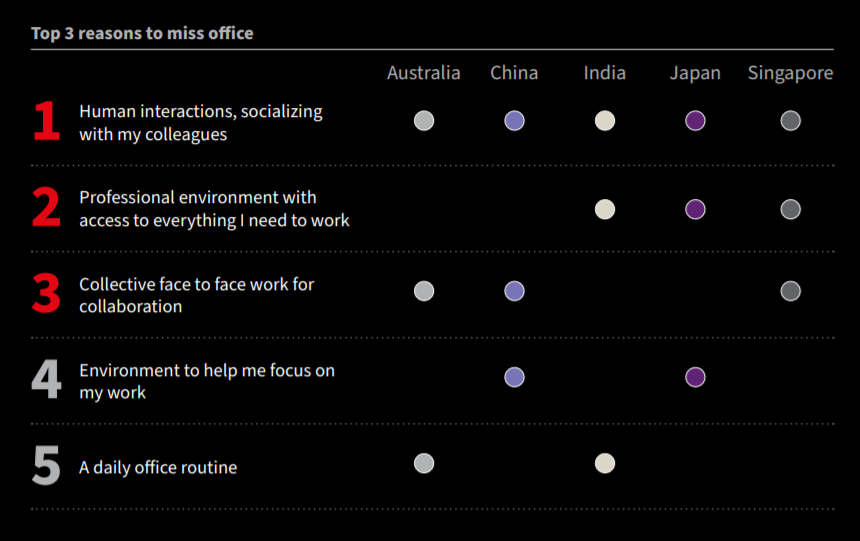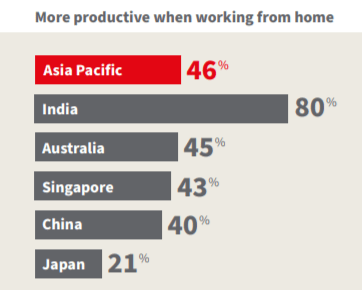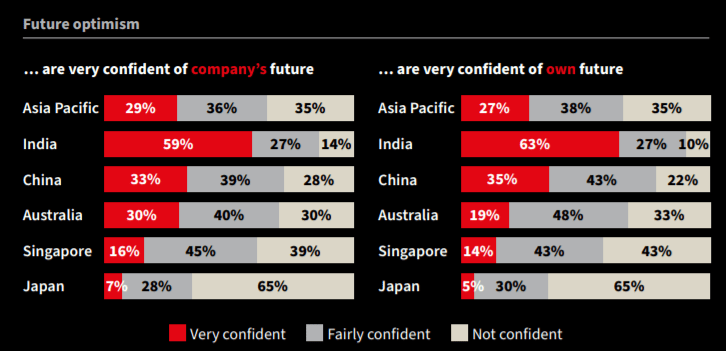As researchers continue to take full advantage of the impromptu remote work experiment COVID-19 facilitated earlier this year, we are learning new, region-specific facts about working from home.
Most studies seem to focus on one or more of the following questions:
- Do employees wish to continue working from home or do they want to return to the office?
- What are employers’ attitudes towards a remote workforce?
- Does work from home affect productivity?
- How would the current organizational structure influence the “new normal” in a post-pandemic world?
Interestingly, different studies indicate that preferences and willingness of employees to return to office varies in different regions.
Fewer studies have, however, looked at the environmental factors involved in productive or unproductive work from home with reference to office spaces. This gap was filled by a recent survey conducted by JLL, an international corporate real estate leasing firm.
The study’s data was collected from 1500 employees belonging to 5 APAC countries, namely, India, Australia, Singapore, China, and Japan. Titled “Home and Away: The New Workplace Hybrid?”, this report looks at the possibility of future work arrangements becoming a mixture of work-weeks that are split into in-office work hours and remote-work hours. The study, however, maintains that office spaces will continue to be of salience to all organizations.
61% Employees Miss Working in an Office
The collected data revealed that out of a sample in which 68% of employees were working remotely, 61% missed working in the office. While Singapore had the highest volume of remotely working employees at 81%, India had the highest percentage of employees who wished to go back to a traditional office setting at least part of the time at 82%.

The survey also assessed the possible reasons as to why employees wish to return to the office. While all countries varied on the other dimensions, they unanimously picked interacting with colleagues as one of the causes of missing work.

3 out of 5 countries surveyed also felt that their home environment wasn’t adequately equipped to function as a holistic professional environment, with the exceptions being Australia and China. However, Australia and China cited a lack of collaborative work as one of the drawbacks, along with Singapore.
Japanese and Chinese employees viewed their workplace as an environment that increased their focus on their work, possibly indicating that Chinese and Japanese offices are either ideal work environments or that employees from these countries compartmentalize work and personal life to a large extent. This was also reflected in findings which revealed that employees from China, Japan, and Singapore felt their work-life balance getting disrupted the most due to work from home orders.
Australian and Indian employees missed the structure and routine in-office work created.
Out of all age groups, the Millennial demographic in particular missed working in the office the most with a percentage of 66%. However, 81% felt technologically ready to work from home. They also vouched for the convenient aspects of remote work, namely, flexible work hours, enhanced work-life balance, and time saved on commute.
Employees were also measured on their perceived productivity and the numbers revealed that most countries fell in the mid-low range with Japanese employees feeling the least productive (21%). The rest of the countries apart from India reported being productive in the 40 – 45% range. As a whole, APAC reported 46% perceived productivity. With these results, India’s figure was a decided outlier, with 80% of employees reporting increased productivity while working from home. Additionally, technological readiness was directly related to a sense of productivity.
“Employees with access to advanced tools to
manage work, information, and relationships at
distance had higher productivity at home. The
biggest productivity gains were found among
workers equipped with immersive and business
intelligence tools,” the report said.

Going forward, Indians are most optimistic about their company’s and their own futures (59% and 63% respectively), followed by China. However, the percentage is almost half of that of India’s. Australian’s show a relatively large gap in their expectations about the company’s future success, as well as their own success, with a higher percentage optimistic about the company’s future but not their own. Singapore has fairly similar figures for both variables, but very few employees have favorable expectations (16% and 14%). Japanese employees have shown the least hopefulness regarding the future, with 7% optimistic about the company’s future and only 5% optimistic about their own.

Implications for Office Spaces
As the report’s title suggests, the new workplace will be a hybrid between “home and away,” suggesting that as organizations and employees become better at navigating working remotely, the overall format of offices will become a little more skewed towards remote, out-of-office workplaces.
Considering that all employees miss office for the social connection it provides, offices will become more synonymous with social hubs and represent a place where employees can interact with coworkers. Accordingly, office spaces will have to be designed and leased keeping this change in mind.
While offices are not expected to become obsolete anytime soon, the report offers that organizations will have a greater chance at post-pandemic success if they re-invent office spaces to amplify the experiences employees miss most, while ensuring that workers continue to enjoy the benefits of remote work, at least some of the time.
The sample for this survey came from 5 countries with very different work cultures, providing deeper, more nuanced answers to the remote work phenomenon. This is in sharp contrast to other studies that mainly focused on the United States, where approximately 4% of employees wish to go back to the office and 47% of employers view permanent remote employment as a favorable option.
While a lot of employees report being just as productive working from home as they were in the office, a study assessing post-lockdown, in-office productivity in European countries shows that productivity sky-rocketed when employees were called back to work.
Even so, when all is said and done, hybrid workforces are largely accepted to be the future of employment.

